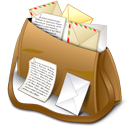When you write in the realm of horror, dark fantasy and science fiction, you’re often required to read and research different topics for reference. Like many other authors, I’ve poured through copies of ancient texts to get behind the myths and legends, to view them with a critical eye.
Working on Argentum, for example, required a deep dive into researching Alchemy. That field is interesting because there’s a lot of symbolism and allegory there. Formulas were coded into paintings, and there was often a dual-edged meaning embedded in the rituals. Alchemy wasn’t just about transforming one physical medium into another, it was about transforming the self. In many paintings, some of which you can see in this awesome art book from Taschen entitled Alchemy and Mysticism, there are parallels between the birth-death-resurrection cycle prevalent in Christianity and other religions. Indeed, this book correlates a premise using art. Really fine work, here.
As interesting as that may be, it’s important to understand these works in context. What was happening during those time periods? Why would these ancient texts need to be secret? Well, if you think about it, organized religion back then in many parts of the world isn’t like it is now. You could be killed or thrown in prison for your beliefs. Although Alchemy was practiced as a scientific art for hundreds of years, for many it also required varying amounts of secrecy. Remember, the history of Christianity is a turbulent one that affected every corner of social, scientific, religious and political development in certain parts of the world for many, many years. The references to Christianity in the Art and its formulas weren’t always obvious; there were often many artistic and visual references to other things that acted as symbols for the process.
In other words: these texts are important for more than the words written on their pages. I feel they can’t be read with stars in your eyes, though that is what some people tend to do. It’s always been that way, though. The words “ancient” and “magical” have always inspired people, for a promise of power. Just recently, there was a book called The Secret which sold millions of copies worldwide. What was this tome about? The Law of Attraction. Nothing new to see here. Brilliant marketing, though.
Voynich Manuscript
When I was reading up on other texts, I stumbled across the Voynich Manuscript a couple of years ago. Immediately, when I hear about some mysterious and ancient text it raises an alarm for me. I’m pretty grounded, even though I went through a short phase in my late teens where I wasn’t. Reading further, I understand that there’s a lot of theories about this unusual manuscript from the mid-to-late 1400s which many believe originate from Central Europe.
First, it hasn’t been deciphered yet and there are strange illustrations in it. Just as one example of my thought process, there’s discussion about why plumbing (e.g. pipes and whatnot) was used to depict the biology. Some Alchemists used to boil their bodies in hot water and scrub all the hair off to purify themselves. Bathing as a ritual was an important one for many years; people didn’t take daily showers and baths back then like they do today. Bathing is also relevant to a baptism, too. So, the paintings may not be direct representations, but allegorical illustrations drawn to represent something else.
Now, after having looked at the illustrations and having read the theories, I have a few of my own. Let me be very clear on this: my thoughts are purely speculative since I haven’t put the time in nor have I poured over every word. Seeing a book like this makes me wonder not what the book is saying, but why someone would write it in the first place. Since it isn’t a modern hoax, there’s a theory that it was created for the Holy Roman Emperor at the time, who enjoyed rare and unusual books. If this were true, e.g. created for someone’s enjoyment, what would the creator of the book get out of it? Crafting something like this is a time-consuming process, so there would have to be some larger gain behind this or other story.
Instead, I feel this book might have been coded so no one would understand it, perhaps not even the person (or persons) who wrote it. In other words, there is no cipher because it was never written with one in mind. I don’t believe this manuscript is gibberish, either. It could simply have been written to document rituals in order to solidify their meaning in the writer’s mind. What the Voynich Manuscript could be, then, are the ashes of a life-long pursuit of rituals that cannot be replicated by anyone else.
Take, for example, the strong repetition of words. If I wanted to perform a secret ritual (or a series of them) for a life-long goal, routine would be crucial to me to ensure success. (Just reviewing the illustrations by themselves, you can see that the creator(s) of the Voynich Manuscript have some scientific leanings.) But what if I got stuck (e.g. couldn’t come up with a code or cipher purported to be rampant in Alchemical and other mystical texts)? For the sake of sticking to routine, which is crucial to those who have performed Alchemy and other arts like it, then I’d use the same word over and over because I needed to write something there. Here, the words may not be important as the writing itself, unless the repeated word is an anagram or cryptogram. In that case, the author might feel the word was a magical one, and should be repeated like a chant to imbue power into his concentration or ritual. (Abracadabra is just one of many examples of purported “power” words best used in repetition.) Perhaps the author read his words out loud as he was writing them down. For an Alchemist, that act would add another layer of symbolism and ritual to it.
My next step would be to research the time period and location before closely analyzing the manuscript, to see if I could narrow down the culture and atmosphere to help bring relevance to the text. What were the religious attitudes of the 1440s and beyond? What political influences were occurring at the time? What was the lifestyle like? Education? Literacy? Etc.
Sure, these are just my thoughts. And yes, there’s no way I could be certain I’m right. But here, I’m not trying to be accurate beyond a shadow of a doubt. Here, I’ve explored a mystery to show you how my author’s mind works. After all, researching or theorizing about the Voynich Manuscript is not all that dissimilar to thinking about how a character might have written that book, and for what reason, all those centuries ago.


 Buy Me a Coffee
Buy Me a Coffee
2 Responses to On the Voynich Manuscript and Other Ancient Texts